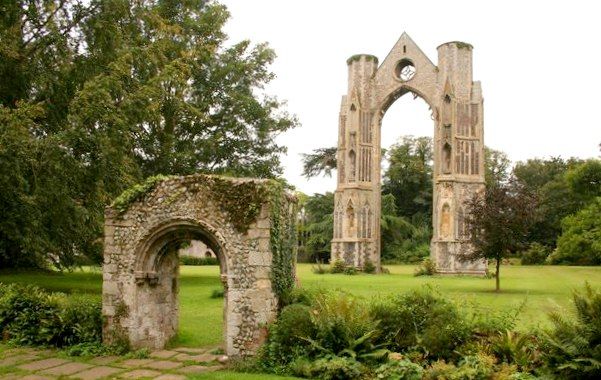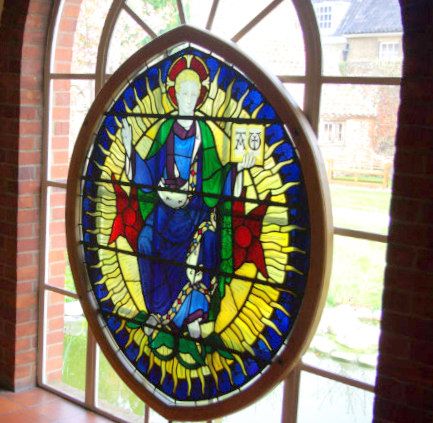Dear friends,
Every year, a group of Christians from Holy Trinity go on pilgrimage to the Shrine of Our Lady of Walsingham. Generally speaking, it is the same group, while the majority of the congregation don’t seem particularly interested. Some have called in to the shrine while on holiday in the area – but that is not the same as actually taking part in a pilgrimage. (A bit like visiting a country church when a wedding is taking place. Not the same as knowing the couple and being part of the proceedings.)
One of the problems with Walsingham could be the cost. Many years ago, the nuns dished out stew and potatoes and rice pudding in a pre-fab hut– and that was it. A cooked breakfast had to be paid for separately if required. Now there is a plush dining hall, a fairly wide choice of menu – and cooked breakfasts are the norm.
If there is a problem then it is that of over-eating. It is all paid for and to forego a meal seems to be a waste of money. (You can, of course, have half-board, but that excludes pilgrims from an important part of pilgrimage – table fellowship.) I wish that the meals were simpler, smaller – and cheaper.
It is the same with the accommodation. It is all very smart and there is nothing for the pilgrim to do. Again, in the “old days”, pilgrims changed the bedding and brought their own towels. As with so many religious establishments, the employing of staff makes it very hard to make redundancies. What about a more “cheap and cheerful” regime, complete with the wielding of the vacuum cleaner at the end of a visit? (There are cheaper ways of being at Walsingham, but it tends to be for teenagers. Camping out in the pilgrim hall, for example.)
Enough criticism – and I may be completely wrong about people’s perceptions. I don’t, generally, like eating out. I look at the plate of food (or the service station sandwiches) and can’t help but add up how much the ingredients cost. (I even take a flask of coffee with me on my travels. I think it might be called meanness – but I will spend a fortune on operas and books – and am more than happy to use a lay-by cafe!) Walsingham is, without doubt, a place of prayer and renewal, a place for rest and contemplation, a place of religious activity and human interaction.
The time is a combination of worship, devotion, laughter, discussion, food, glorious country and sea side. It is not all worship and not all relaxation. A pilgrimage is not an holiday, nor is it a religious retreat. There is very little silence – until the pub closes. What happens to the pilgrim at Walsingham probably needs to be digested back home.
I have been trying to organise a pilgrimage abroad (Lourdes, Assisi etc.) but the Pope has declared 2016 an Holy Year – which means that all the prices go up! Just imagine if the whole congregation (or a goodly number) made pilgrimage to Our Lady’s Shrine, England’s Nazareth. That those who couldn’t afford to go were supported by those who could. What a wonderful experience that would be. Those who go on the Mothers’ Union pilgrimages always say that the experience was far more positive than they expected – and that goes for the parish priest too! Rather like being on holiday, the worries associated with home and the home church are put aside. Worship and fellowship are, generally speaking, unimpeded. Perhaps I am wrong about wanting Walsingham cheaper. There is something about being looked after for a couple of days – no cooking, no washing-up, no chores.
Then there is the heart of Walsingham itself. Devotion to the Son of God and his Holy Mother. Mary always points us to Jesus. If we come to Mary in prayer, then we come to Jesus. If we show our love to Mary, then we are showing our love to Jesus. Too much of English Christianity is about being a good and moral person. “Jesus the example of good living” is not what Christianity is about. “Simon, son of John, do you love me?” says Jesus at the close of S. John’s Gospel. That is what the Faith is about. As one hymn-writer wrote, “Shall we not love thee, Mother dear, whom Jesus loves so well?” I remember many years ago visiting the Roman Catholic Cathedral in Bristol (Clifton), a concrete box but not unattractive and certainly prayerful. Before the statue of Our Lady someone (a child?) had placed a margarine tub with some daisies and dandelions. No one had attempted to remove it. The action was, I think, more effective and devotional than the string of pearls given to the statue of Our Lady in Liverpool Metropolitan Cathedral. Lighting candles before our own Marian shrines could be seen as a gift from ourselves to the Lord’s Mother as well as being a sign of prayer requested for a person in need.
“Shall we not love thee, Mother dear?” LET’S!
Every blessing.



You must be logged in to post a comment.